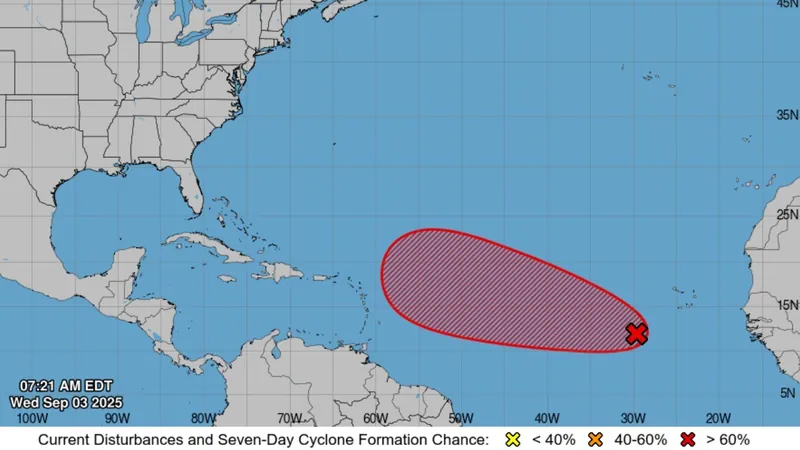
Bending Ice Sparks Electricity! Could This Hold the Key to Understanding Lightning?
2025-09-04
Author: Benjamin
Revolutionary Discoveries in Ice Science
Water ice, one of Earth's most common solids, holds secrets that scientists are just beginning to uncover. With its critical role in our ecosystem and climate, ice has long been a subject of study, yet researchers from the Catalan Institute of Nanoscience and Nanotechnology (ICN2) say our understanding of this vital material is still evolving.
The Mystery of Ice and Electricity
Traditionally, ice in its most prevalent form—hexagonal ice (Ih)—has been deemed non-piezoelectric, meaning it doesn’t create electricity under mechanical stress. Professor Gustau Catalán and his team explain that the structure of ice inhibits the necessary alignment of hydrogen and oxygen molecules needed for this electricity generation.
A Shocking Discovery
Surprisingly, nature reveals that ice does have the capacity to generate electricity, especially during collisions in clouds, a phenomenon linked to lightning. Recent experiments where ice was bent provided groundbreaking insights, as researchers measured the electric potential produced in this process. Their findings correlate with the charge build-up observed during ice particle collisions in thunderstorms.
Flexoelectricity: The Game Changer
The researchers propose that ice exhibits a 'flexoelectric effect,' capable of matching electroceramics like titanium dioxide, which are used in advanced tech such as capacitors and sensors. This flexoelectricity may elucidate how electrical charges accumulate in clouds, leading to the mighty flash of lightning.
Diving Deeper into Ice's Properties
Notably, the team uncovered that ice generates electric charges at all temperatures under mechanical stress. They identified a thin layer of 'ferroelectric' properties on the surface of ice at extremely low temperatures. This discovery indicates that ice can develop natural electric polarization, akin to flipping the poles of a magnet when influenced by an external electric field.
Two Paths to Electricity
Dr. Xin Wen, a key researcher in the team, highlighted that ice may possess two mechanisms for electricity generation: ferroelectricity at chilling temperatures and flexoelectricity up to 0°C. This dual capability could revolutionize how we view ice’s role in nature.
Future Prospects: Harnessing Ice's Power
Looking ahead, the researchers plan to explore the potential of utilizing ice as an active material in new electronic devices, particularly in colder climates. The implications of these discoveries could extend far beyond icy terrains and could reshape our technologies for the better.









 Brasil (PT)
Brasil (PT)
 Canada (EN)
Canada (EN)
 Chile (ES)
Chile (ES)
 Česko (CS)
Česko (CS)
 대한민국 (KO)
대한민국 (KO)
 España (ES)
España (ES)
 France (FR)
France (FR)
 Hong Kong (EN)
Hong Kong (EN)
 Italia (IT)
Italia (IT)
 日本 (JA)
日本 (JA)
 Magyarország (HU)
Magyarország (HU)
 Norge (NO)
Norge (NO)
 Polska (PL)
Polska (PL)
 Schweiz (DE)
Schweiz (DE)
 Singapore (EN)
Singapore (EN)
 Sverige (SV)
Sverige (SV)
 Suomi (FI)
Suomi (FI)
 Türkiye (TR)
Türkiye (TR)
 الإمارات العربية المتحدة (AR)
الإمارات العربية المتحدة (AR)